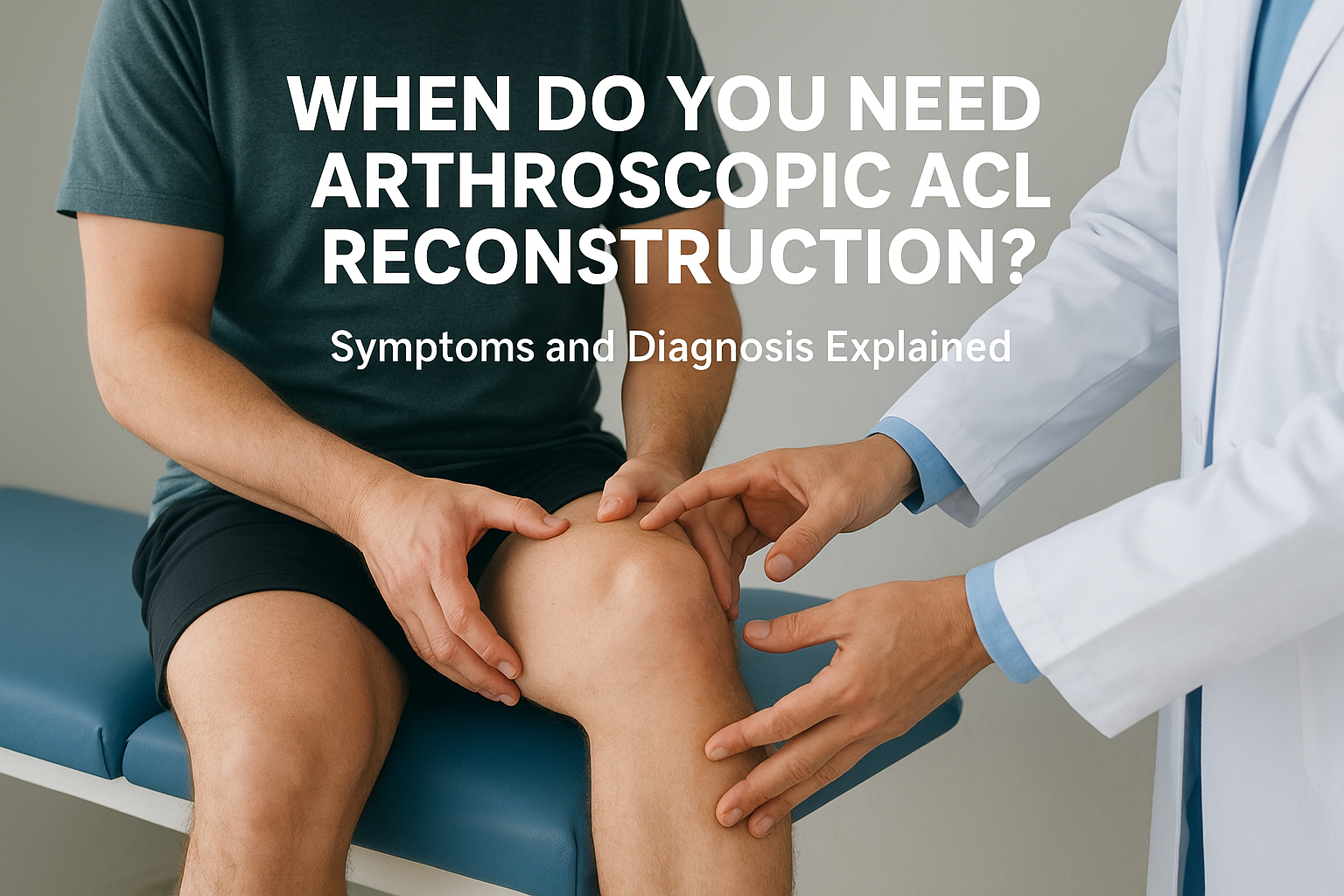Anterior Cruciate Ligament (ACL) injuries are common in athletes and active individuals. When the ligament is torn, patients often struggle with knee stability. Arthroscopic ACL reconstruction is a minimally invasive procedure that restores function and prevents long-term damage. Knowing the symptoms and diagnosis helps in deciding the right time for surgery.
Understanding ACL Injuries
The ACL is a key ligament that stabilizes the knee joint. It connects the thigh bone to the shin bone and prevents excessive forward movement. An injury usually occurs due to sudden stops, twisting motions, or direct trauma during sports.
Symptoms of an ACL Tear
Recognizing early signs is essential. Common ACL injury symptoms include:
Sudden popping sound at the time of injury.
Severe knee pain immediately after trauma.
Swelling within hours, caused by bleeding inside the joint.
Knee instability, especially while walking or changing direction.
Limited range of motion and difficulty straightening the leg.
If you notice these symptoms, medical consultation is crucial to avoid worsening the damage.
When Is Arthroscopic ACL Reconstruction Needed?
Not all ligament injuries require surgery. However, arthroscopic treatment is recommended if:
The ligament tear is complete.
The patient experiences repeated instability.
Conservative treatments fail to restore function.
The injury affects athletes or physically active individuals.
Associated meniscus or cartilage damage is present.
Diagnosis of ACL Injuries
Accurate diagnosis is vital before considering arthroscopic ACL reconstruction. Orthopedic specialists use:
Physical tests such as Lachman and Pivot Shift tests to check knee stability.
MRI scans to confirm ligament tears and detect associated injuries.
X-rays to rule out fractures or bone damage.
Clinical evaluation to understand activity levels and recovery goals.
Benefits of Arthroscopic ACL Reconstruction
This minimally invasive surgery provides multiple advantages:
Smaller incisions and faster healing.
Reduced risk of complications.
Strong and stable graft placement.
Early return to sports and active lifestyle.
Recovery After Surgery
Post-surgery, patients undergo a structured rehabilitation program. Physical therapy helps in:
Restoring knee strength and flexibility.
Improving balance and coordination.
Gradual return to daily activities and sports.
Conclusion
Early recognition of symptoms and accurate diagnosis play a key role in deciding the need for arthroscopic ACL reconstruction. Timely surgery restores knee function and prevents long-term complications.
If you have knee instability or suspect a ligament tear, consult our Dr. Abhishek Barli, Best Orthopedic Surgeon in Hyderabad, for expert diagnosis and treatment.

